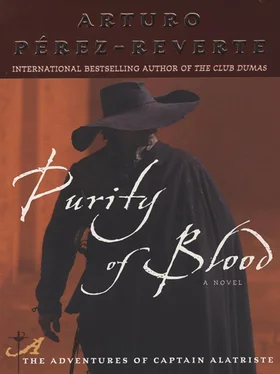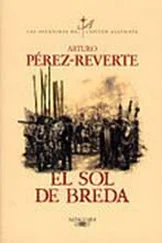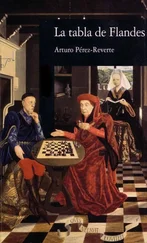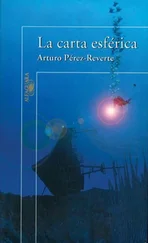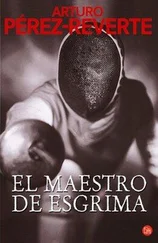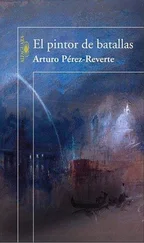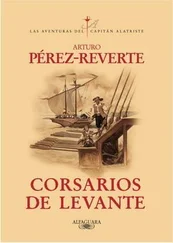Arturo Pérez-Reverte - Purity of Blood
Здесь есть возможность читать онлайн «Arturo Pérez-Reverte - Purity of Blood» весь текст электронной книги совершенно бесплатно (целиком полную версию без сокращений). В некоторых случаях можно слушать аудио, скачать через торрент в формате fb2 и присутствует краткое содержание. Жанр: Старинная литература, на английском языке. Описание произведения, (предисловие) а так же отзывы посетителей доступны на портале библиотеки ЛибКат.
- Название:Purity of Blood
- Автор:
- Жанр:
- Год:неизвестен
- ISBN:нет данных
- Рейтинг книги:3 / 5. Голосов: 1
-
Избранное:Добавить в избранное
- Отзывы:
-
Ваша оценка:
- 60
- 1
- 2
- 3
- 4
- 5
Purity of Blood: краткое содержание, описание и аннотация
Предлагаем к чтению аннотацию, описание, краткое содержание или предисловие (зависит от того, что написал сам автор книги «Purity of Blood»). Если вы не нашли необходимую информацию о книге — напишите в комментариях, мы постараемся отыскать её.
Purity of Blood — читать онлайн бесплатно полную книгу (весь текст) целиком
Ниже представлен текст книги, разбитый по страницам. Система сохранения места последней прочитанной страницы, позволяет с удобством читать онлайн бесплатно книгу «Purity of Blood», без необходимости каждый раз заново искать на чём Вы остановились. Поставьте закладку, и сможете в любой момент перейти на страницу, на которой закончили чтение.
Интервал:
Закладка:
In any case, if it is true that Martín Saldaña was slow in certain things, he was definitely not so when it came to drawing his sword, or dagger, or poniard, or the well-oiled pistols he was wont to wear in his waistband—all of which clanged like sounds issuing from a smithy. On the night of the third day after the aforementioned décima had circulated among the gossipers gathered at the mentidero of San Felipe, the most popular of Madrid’s rumor mills, this same now-not-so-gifted Villaseca had been found at the very door to this house with three sword-tailored buttonholes in his body. He was now extremely well qualified—whether from Purgatory, Hell, or wherever—to confirm exactly how swiftly the constable could move.
The fact is that from the calm and collected inspection the head constable made of the cadaver, almost nothing was learned. The dead woman was mature, nearer fifty than forty, dressed in a voluminous black gown and a headdress that lent her the look of a duenna, or a lady’s companion. Her purse held a rosary, along with a key and a crumpled religious card depicting the Virgin of Atocha. Around the victim’s neck was a gold chain bearing a medallion of Saint Águeda. Her own features suggested that in her younger days she had been well favored. There were no signs of violence other than the silk cord still cutting into her neck, and her mouth, frozen in the rictus of death. From her color, and the rigor, the constable concluded that she had been strangled the preceding night, in that same sedan chair, before being carried to church.
The detail of the pouch with money for masses for her soul indicated a twisted sense of humor—or, conversely, great Christian charity. After all, in the dark, violent, and contradictory Spain of our Catholic King Philip IV, in which dissolute wastrels and rough-living braggarts howled for confession at the top of their lungs after being shot or run through by a sword, it was not unusual to encounter a pious swordsman.
Martín Saldaña told us about the event late that afternoon. Or, to be more precise, told Captain Alatriste. We met him at the Guadalajara gate, returning among the crowd from the Plaza Mayor after he had completed his inquiries regarding the murdered woman. Her body had been laid out in Santa Cruz in one of the coffins for hanged prisoners, in hopes that someone might identify her. The constable merely mentioned the murder in passing, more interested in the performance of the afternoon’s bulls; at that time in Madrid, street crimes were common, but afternoons of bulls and cañas were growing scarce.
Cañas, a kind of tourney on horseback between teams of fine gentlemen, in which our lord and king himself sometimes participated, had become very mannered—a contest between pretty-boys and fops, tending more toward flourishing and flirting and ladies than toward cracking heads, as God would have it. They were not in any way what they had been in days of the wars between the Moors and the Christians, or even in the lifetime of our young monarch’s grandfather, the great Philip II. As for the bulls, they were still, in that first third of the century, a passion of the Spanish people. Of the more than seventy thousand residents of Madrid, two thirds flocked to the Plaza Mayor every time the bulls challenged the courage and skill of the caballeros who confronted them. Because in those days, hidalgos, grandees of Spain, even men of royal blood, had no hesitation about riding out into the plaza on their finest steeds to bury the dagger-point of their rejón, the long wooden lance, in the withers of a fine Jarama bull. Or one of them might just as readily dismount and bring the bull down with his sword, amid the applause of the crowd that gathered either beneath the arches of the plaza—in the case of the common folk—or on balconies rented for as much as twenty-five or fifty escudos by courtiers and papal and foreign ambassadors.
These events were then celebrated in ballads and poems—either elegant, or comic and grotesque—events that Madrid’s cleverest minds quickly seized upon to sharpen their wit. Such as the time a bull chased a constable, and the public took the side of the bull—officers of the law did not then, as they do not today, enjoy great popular favor; and:
The bull had good reason that day to pursue the object of mirth, for of the four horns in the fray only two had been there at birth.
On one occasion the Admiral of Castile, while fighting, on horseback, an unusually large bull, accidentally wounded the Conde de Cabra instead of the beast. That was cause for the following famous lines—turning on the pun of the name Cabra, which means “goat”—to race through the most busily buzzing mentideros of Madrid.
A thousand and more have won fame, but only the Admiral, abra-cadabra, is the first, with his trusty lance, to turn a bull into a Cabra.
It is understandable, then, returning to that Sunday of the murdered woman, that Martín Saldaña would bring Diego Alatriste up-to-date on what had kept him away from the afternoon’s sport. The captain, in turn, recounted the details of the bullfights, which Their Majesties, the king and queen, had witnessed from the balcony of the Casa de la Panadería—and the captain and I standing among the ordinary public, eating piñon nuts and lupin seeds in the shade of the Pañeros arch.
There had been four bulls, all fiery; and both the Conde de Puñoenrostro and the Conde de Guadalmedina had been outstanding in placing their rejones. A Jarama bull had killed the latter count’s horse, and he, very brave, very much the cavalier, had jumped to the ground, slashed the animal’s tendons, and dispatched it with two good thrusts of his sword. That feat had earned a fluttering of ladies’ fans, the approval of the king, and a smile from the queen—who, as word later had it, scarcely had taken her eyes off him, for Guadalmedina was a fine figure of a man.
The final bull added a last colorful note when it attacked the royal guard. As you may know, Your Mercies, three units of guardsmen—Spanish, German, and one of harquebusiers—always stood in formation below the royal box, lined up shoulder to shoulder and with halberds at the ready. They were forbidden to break rank, even should a bull charge them with all the animus of a Turk. That afternoon the snorting animal had made straight for the guards, bothered not a whit by the halberds, and had taken with him on a tour of the ring, impaled upon a wicked horn, one of the large blond Germans. The hapless guard found himself being separated from his innards amidst a chorus of Himmel s and Mein Gott s. Sacraments were administered there in the plaza.
“He was slipping around on his own guts, like that lieutenant in Ostend,” Diego Alatriste concluded. “You remember him? The one in our fifth assault on the del Caballo redoubt…Ortiz was his name. Or Ruiz. Something like that.”
Martín Saldaña nodded, stroking his graying beard, which he wore partly to hide the scar he had received twenty years before, around the third or fourth year of the century, during that same attack on the walls of Ostend.
They had poured out of the trenches at the break of dawn—Saldaña, Alatriste, and five hundred other men, among them my father, Lope Balboa. They’d swarmed the terreplein, with Captain Tomás de la Cuesta in the lead, followed closely by that lieutenant Ortiz, or Ruiz—oh, what the devil was he called?—carrying the flag bearing the cross of Saint Andrew.
Before climbing over the parapet, they had taken the first line of the Dutchmen’s trenches with nothing but small arms, under constant enemy fire from above. They had spent half an hour in hand-to-hand fighting as musket fire whizzed around them. That was where Martín Saldaña had received the slash across his face and Diego Alatriste the one above his left eyebrow. Lieutenant Ortiz-Ruiz was hit by a musket ball fired at point-blank range, blowing away half his belly. His intestines spilled out and dragged on the ground and he struggled to hold them in with both hands as he ran to escape the battle. He did not have the chance, because almost immediately he was killed by a shot to the head.
Читать дальшеИнтервал:
Закладка:
Похожие книги на «Purity of Blood»
Представляем Вашему вниманию похожие книги на «Purity of Blood» списком для выбора. Мы отобрали схожую по названию и смыслу литературу в надежде предоставить читателям больше вариантов отыскать новые, интересные, ещё непрочитанные произведения.
Обсуждение, отзывы о книге «Purity of Blood» и просто собственные мнения читателей. Оставьте ваши комментарии, напишите, что Вы думаете о произведении, его смысле или главных героях. Укажите что конкретно понравилось, а что нет, и почему Вы так считаете.
